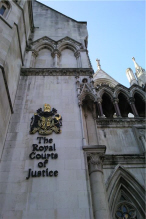Root cause
 A recent Court of Appeal ruling in a case involving property subsidence caused by tree roots is significant for local authorities, writes Andrew Plunkett.
A recent Court of Appeal ruling in a case involving property subsidence caused by tree roots is significant for local authorities, writes Andrew Plunkett.
The Court of Appeal in G.A Berent v (1) Family Mosaic Housing (2) Islington LBC [2012] EWCA Civ 961 has upheld the decision of the trial court, in relation to a claim for subsidence damage to a residential building caused by tree roots.
The trees in question were the responsibility of Family Mosaic Housing (“Mosaic”) and of Islington London Borough Council respectively. The trial court found that the trees were responsible for part of the damage to the claimant’s property.
However, the trial court also found that neither Islington, nor Mosaic could reasonably be expected to foresee the damage to the subject property unless or until they could reasonably have foreseen the damage to that specific property – until, in this case, they had been notified (by the claimant) that the property had suffered damage, and been provided with reasonable evidence that the relevant tree(s) were responsible for that damage.
Until they were so notified, the damage was not reasonably foreseeable; the defendants therefore had no duty to eliminate the relevant nuisance, and accordingly had no liability for damage caused before then. As in this case, most (if not all) of the relevant physical damage had occurred before the defendants were notified, they had very little liability.
The chief issue on appeal of general relevance was the issue of foreseeability, on which (as on the other grounds of the claimants’ appeal) the court upheld the trial judge’s original findings.
The Court of Appeal emphasised that there must be a “real risk” of damage, as opposed to a mere possibility, and that in this context one cannot separate the issue of what is reasonably foreseeable damage from the related question of what it is reasonable to do the light of the said risk. The experts had been of the view that the only certain way to prevent any subsidence damage to properties in the general area, as a result of the trees, would be to remove them.
Although the ground in the area was known to consist of London clay, and therefore to be potentially susceptible to subsidence, there was nothing to suggest that this was a “hotspot or problem area”. Since (to adopt the language of the trial court) wholesale “desertification” of the area by removing all the trees was plainly out of proportion to the risk the defendants had no reason to consider that there was a “real risk” of the trees causing damage and therefore were under no duty to consider whether the trees should be removed. In any event, the defendants were plainly not in breach of any duty in failing to remove the relevant trees earlier.
This represents a significant change from the view previously taken by the courts which was (in effect) that if it was foreseeable that one/some properties in a tree lined street in an area of clay-based soil would suffer subsidence due to tree roots, that was sufficient to establish foreseeability in respect of a particular property, for the purpose of a claim in nuisance.
In legal terms, the decision of the Court of Appeal is a reminder that, both in nuisance and in negligence, causation is not sufficient to establish liability. The claimant must establish a duty to act to prevent or eliminate the relevant nuisance, which in turn requires establishing a sufficient degree of foreseeability.
With regards to the practical effects, the facts in every case are different, and it should be noted that the facts in this case were unusual in a number of respects.
However, the likely effect of this decision is that whereas previously a local authority (or other organisation responsible for maintaining the relevant trees) in an area where the soil is generally known to have a large element of clay or otherwise to be susceptible to subsidence, was generally held liable for damage caused by their trees which occurred before the authority was notified of the damage, it is now unlikely to be held liable for any such initial damage.
All other factors being equal, this decision is unlikely to affect liability for damage which occurred after the authority was notified of the relevant damage and provided with supporting evidence. Whilst the level of the initial damage before the party responsible for tree maintenance is notified may (in many cases) be relatively low, it potentially applies to every claim of property subsidence caused by tree roots.
In general terms this decision is a welcome recognition of the importance of trees to an urban environment, and the recognition that their preservation is of benefit to the local community generally.
The appellants have sought leave to appeal to the Supreme Court, and it remains to be seen whether this decision is the final word on the issue.
Andrew Plunkett is a Solicitor at Berrymans Lace Mawer. He can be contacted on 020 7865 3383 or by This email address is being protected from spambots. You need JavaScript enabled to view it..